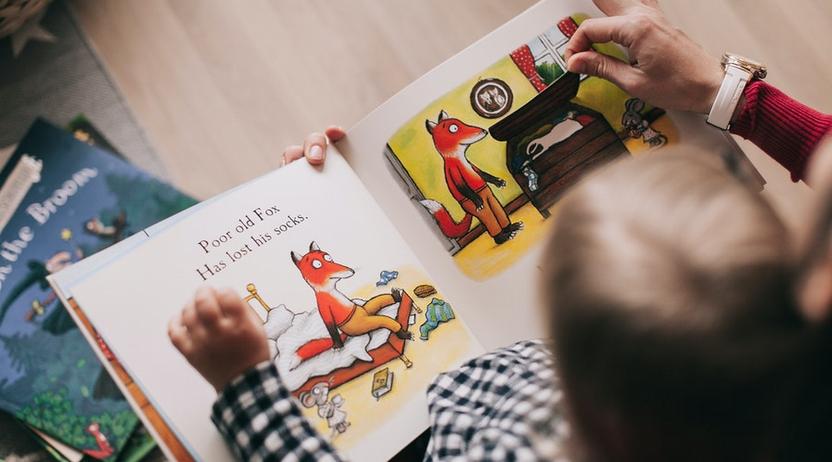Just like in any other industry, it’s important to know whether the service you’re getting is worthwhile. You may think there’s no way of knowing translation quality without knowing both languages. Don’t worry! As a linguist, I’ll share a few industry standards to identify a quality translation plus some things you should leave to the pros.
Table of Contents
The role of MTPE
Characteristics of quality translations
- Attractive formatting
- Consistent terminology
- Language-specific phrasing
- Country-specific spelling
- Proper grammar
- Understanding the target audience
- Natural voice
- Native speaker preference
- Attention to detail
The Role of MTPE
Before getting into some of the signs of a quality translation, you first should understand a little bit about what the translation industry is like today. There are two basic approaches to translation: human translation and machine translation post-editing (MTPE). As the name suggests, human translation refers to a translation done by a person. MTPE, on the other hand, is a translation generated by a machine and edited by a person.
What you may or may not realize is that even though many agencies hire translators (humans, that is), MTPE represents the majority of translation volume in the industry today. Human translations are quickly becoming a thing of the past.

Machines are used more and more for translation, and humans are taking on an editing role.
Why should you care? As a client, you’d like to know you’re getting a worthwhile service but you might not know exactly what that looks like. The reason why you should understand the prevalence of MTPE in the translation industry today is because it ties directly into quality concerns.
The long and short of it is that translators are often expected to work twice as fast with MTPE. They’re also instructed by agencies to edit as little as possible of the automated text for it to pass as a document ready for delivery. That means the text may not read as naturally as it should, limited time means limited research (a huge part of the job) and translation may shift from skilled writing to inadvertent acquiescing.
Now that you understand the prevalence of MTPE and its impact on translation, I’ll cue you into some ways to vet translation quality without needing to learn another language.
Read More About Machine Translation
Why Professional Translators Are Needed Despite Machine Translation
Characteristics of Quality Translations
Attractive Formatting
When you request a translation, you are not requesting graphic design services. However, good translators should at least be expected to understand basic formatting on a word processor. Or they should use a computer aided translation (CAT) tool which will often eliminate the need for formatting tasks.
So if you order a translation and the document you receive is clumsily formatted with inconsistent fonts and font sizes and if indented lines don’t line up perfectly, then you have reason to believe that the translation quality may be as bad as the formatting.
Good translators will know how to use basic word processing programs; that’s part of their job. Also, language service providers (LSP) should have desktop publishing (DTP) professionals who can fix the formatting of the document after the translation has been completed.
It goes without saying that formatting may vary for translations involving separate alphabets. Certain languages or even translation styles may be more or less wordy than their original counterparts. All of this may affect the layout of the translated document, making it a little different from the original source document. Still, it’s reasonable to expect an attractively formatted document. As always, know that you can request an edit if anything is missing, incorrect, or unsatisfactory.

Consistency is critical for translation.
Consistent Terminology
One of the most important aspects of a quality translation is maintaining consistent terminology. That means you shouldn’t see oil, gas and petrol used interchangeably throughout the document; there should be one term and one term only.
You may think that’s extra nitpicky but here’s the deal: MTPE often cranks out several alternatives for a single source word. Translators also need to be very deliberate about word choice which is especially the case for industry terms found throughout a document.
The other reason to keep an eye on consistent terminology is because it’s harder to maintain across large jobs. Some jobs are also split and worked on by multiple translators which means maintaining the same terminology is that much more important for a cohesive final product.
Need a Translation?
Click the button below to tell us about your translation request.
Get a Free Quote
Language-Specific Phrasing
The thing about good translations is that you shouldn’t be able to tell it wasn’t the original. In other words, the language used should be like anything else you’re familiar with as a native speaker and it should sound like it’s written by someone you might run into day to day. (If your translation agency hires native speakers, it probably is!)
What does that mean specifically? A quality translation should include things like idioms, sentence structure typical of the target language, references specific to the country or culture, etc.
For example, a marketing document translated from German may reference the height of a monument unknown by American audiences. It would be my job as the translator to research that building, find out its height and substitute it with an American equivalent.
Read More
Did you know there are many different dialects of Spanish? Learn about the major Spanish dialects with our article: 8 Types of Spanish—How to Choose for Your Translations
Country-Specific Spelling
One thing that defines every translation job is the language pair (source>target) and spelling norms. For example, in English, most jobs are translated into either British or American English and the terminology and spelling should reflect that.
Translators include terms specific to the dialect such as “pram” instead of “stroller” for British English. Because our language development is rooted in regional and national variations, country-specific spelling is often the main marker of consistency for this quality criterion.
Proper Grammar
The fact that good grammar is required of a quality translation probably wouldn’t surprise you. However, it’s worth mentioning especially considering the number of awful translations on display for all the world to see.
Translators don’t have much to complain about in the way of continued learning in the field. It’s only fair that if we’re writing for the general public (or any audience, really), we know the ins and outs of correct grammar as well as any major changes in writing standards.
Pro tip: translators who point out grammar or writing mistakes elsewhere in your content are doing you a solid.
Understanding the Target Audience
Understanding a target audience may sound vague but it’s a pillar of quality translation (or quality writing, for that matter).
If you’re translating a medical document meant for specialists in the field, the language would be formal and technical. If, on the other hand, you’re translating a brochure for hospital patients, you may still need to explain some of the same terms or medical conditions while using more general language.
Another thing to consider when it comes to audience is approximating tone and terminology. For example, I used to translate a number of articles for a financial company and included terms relevant to the financial sector. However, the articles themselves were more like gossip columns so it was important to incorporate casual language in the English version. The more specificity, the better!

Always consider the target audience when translating a text.
Natural Voice
The way to tell a really good translation apart from accuracy is how well it reads to a native speaker. In an ideal scenario, you wouldn’t even know it was translated at all. Translating in a natural voice means the words on the page should flow like they would in a conversation or an excellent book. You shouldn’t have to question whether you understood something correctly or reread a sentence two or three times to finally get it.
Natural-sounding translations are especially tricky to uphold in the MTPE landscape. Asking translators to change as little as possible means sentences which are technically correct can still come off like middle school small talk. Some things are harder to translate than others like jokes or expressions but relying on machines alone is a recipe for disaster.
Lastly, be aware of a word-for-word translation because it’s an exact replica of the source in the worst kind of way. Inexperienced translators are often to blame because they don’t yet have the hang of balancing accuracy and flow. Just remember that a clumsy translation is cause for concern.
Are You a Professional Translator?
Check out our massive list of more than 100 translation tools for professional linguists. It’s the biggest list of translation technology on the Internet and continually updated. Explore the list here >>> Tools for Translators
Native Speaker Preference
As a client, you probably will never know who translated a document for you. But you should be aware that good translation agencies prefer to hire translators that are native speakers of their target language. That means that if English is my first language as an American and I learned German as a second language, I’d always translate from German to English.
There are a few exceptions to this rule and a few gifted souls to whom normal laws of the universe don’t apply. It’s unfair; I know.
The idea makes a lot of sense if you think about it, though. For one thing, most people will never speak any language as fluently as their own. It’s also very efficient to translate into your native language because you’re that much better at it. Time is money and the translation industry is very much a business!
I think the most important reason to translate into your native language (or to hire native speakers) is because there’s no way to self-assess how good or bad you sound in a foreign language. The text you’re translating will certainly be read by native speakers so the prose should meet their expectations and fluency level. If the writing is bad, so is the translation.
Attention to Detail
If there’s one thing I could choose, attention to detail would always top the list. A translation that’s inconsistent, sloppy, poorly worded, or otherwise off should definitely raise some eyebrows.
Clients are sometimes hesitant to come forward with problems because they feel like a fish out of water. If you notice something that strikes you as odd, inconsistent, or incorrect, that’s reason enough. You don’t have to be a chef to know what tastes good so why should translation be any different?

Translators must pay close attention to detail.
Go to top
What Not to Ask
Working on the other side of the vendor/client divide means I’ve also seen all kinds of requests on my end. There are two major things I’d ask clients to politely consider if they’re unhappy with the final translation.
First and foremost, please acknowledge that this is our profession. We do make mistakes and you’re allowed to question them. However, the skills you learned in your foreign language classes do not rival that of a native speaker. Even people with high levels of proficiency in another language can’t compete with a translator’s lifetime of knowledge, study, speech and reading day in and day out. It follows that your suggestions for alternative word choice are ill-advised if well-intentioned in most cases.
Secondly, please don’t ask for an edit three, four or ten times. (Yes, that really happens.) It’s one thing if you find valid errors in your translation and ask for an edit. On rare occasions, it may even be fine to ask for a second one if you notice another problem or if the first version wasn’t quite right. Edits are often unpaid and translators can and do decide not to work with certain clients again.
And don’t make frequent changes to the source documents halfway through the translation process and expect translators to joyfully accept the extra work. Typically changes to the source documents after the project has already begun incur additional costs.
Final Thoughts About Quality Translation
Now that you know how to spot a quality translation, you can apply these criteria to future jobs and service providers. The underlying theme is that standards we use within the industry can point clients in the right direction. Don’t underestimate your insight and skill as a native speaker, and know you’re within your right to ask for corrections. Best of luck on your search for a quality translation and feel free to share your thoughts on the subject in the comments below!
Martha Oschwald is a copywriter specializing in all things design-related. With a background in translation and architecture, she combines quality prose with creative content at Delicious Words.
Get free translation tips straight to your inbox!
- Get tips on how to translate your website, marketing materials!
- Get actionable advice to help you succeed with international business.
- Be the first to access free language and management tools.



